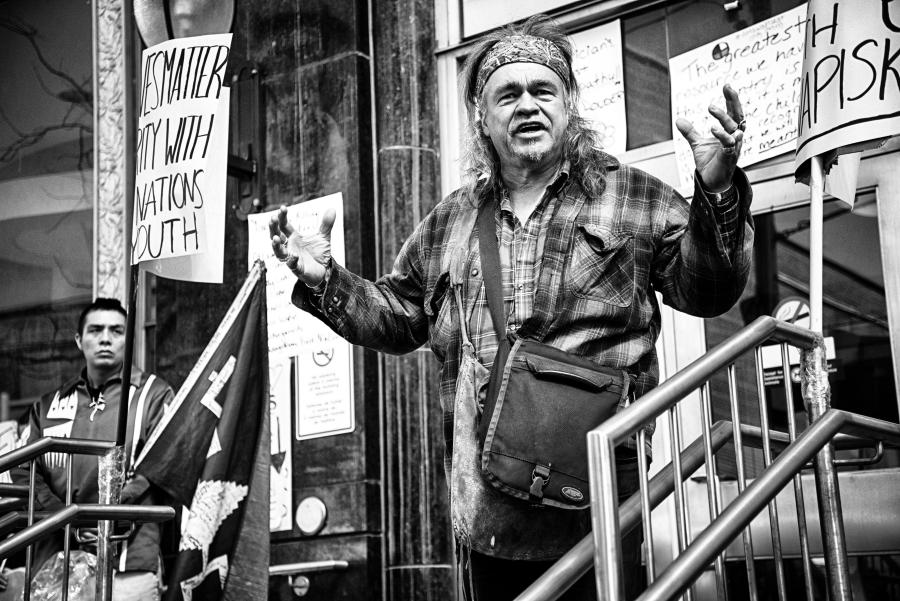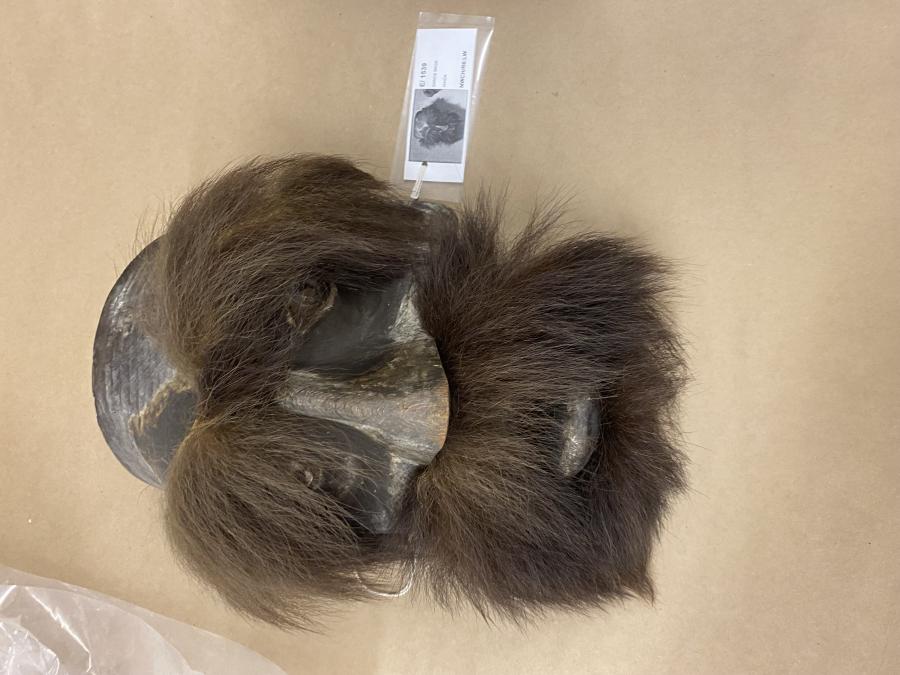"Off-the-beaten-track" is, ironically, a very well-beaten path taken over the centuries by colonists, anthropologists, missionaries, developers, international aid agencies and World Bankers, environmentalists, and the ever-expanding tourism industry. This industry, is now a sundry crew of tourists, thrill-seekers, adventurers, bird and whale watchers, sports enthusiasts, cruise ships the size of cities, builders of airports, hotels and global communication systems, traveling scientists and academics, well-intentioned social justice activists, and millions of others. This well-worn path, once limited to the rich or the resourceful academic, has now been deeply traced into the most isolated spaces on Mother Earth by a growing number of outsiders.
Tourism often creates conflict and resentment with local peoples, particularly once the realities of its impact become clear. Examples of the negative impacts of tourism upon indigenous peoples are numerous throughout history and continue largely unabated today. Beach hotels have displaced the fishing communities that once lined the coasts of Penang, Malaysia and Phuket, Thailand. A Mohawk uprising in Canada was triggered by plans to extend a golf course on to Mohawk burial grounds. Indigenous burial sites have been desecrated by resorts in Hawai'i and Bali. In the tropical jungles of the Amazon insensitive tourism operators have disrupted religious ceremonies, and even brought diseases like tuberculosis into indigenous communities.
In the Black Hills, the native Sioux work as low-wage laborers in a white-owned tourism industry that promotes their culture and lands. In Thailand, Hill Tracts people are viewed much like human zoo specimens by drug and adventure-seeking trekkers. Around the world there is a plundering of archaeological sites and illegal trade in wildlife and cultural artifacts. For workers who once owned and worked the land, the hotels now barely pay them a living wage. Some are forced into labor, as in Burma, to build hotel accommodations by a government well known for its abuse of human rights. Indigenous women, men, and children worldwide are exploited by the growing sex tourism industry. Tourism produces foreign domination and dependency, polarization, environmental destruction, cultural alienation, and the loss of social control and identity among host communities.
The Colonists and Seekers
The earliest hunters and gatherers and nomads traveled in search of land and wildlife to sustain them. They were aware of the fragility of the Earth and traveled with the seasons. Through-out history people have traveled for a number of reasons, including colonization, trade, war, famine, disease, political persecution, and religious pilgrimages. Around the turn of the 19th century, wealthy, and sometimes eccentric, European travelers journeyed to view natural scenery, mountains and other cultures. They were later joined by writers and artists who began to discover the "romance" of travel. Authors Joseph Conrad and Somerset Maugham wrote stories of the the great adventurer, vivid and romanticized accounts of the Far East, and journeys into the dark and lonely heart of Africa.
Anthropologists like Margaret Mead drew global interest to indigenous societies. Scientists like Charles Darwin and Alexander von Humbolt who studied wildlife and plant species in exotic places also created interest in exotic places. In the United States, around the beginning of the 20th century, John Muir wrote about walking overland through the American south and traveling to Alaska and India.
Photography piqued the interest of travelers as well. Starting in 1895, when the development of the printing trades allowed for the economical manufacture of mass-produced "view-cards," images of distant cultures and "exotic" lands were posted around the globe. The views that came out of Africa, the Americas, and Asia during this period provided detailed documentation of far off places and peoples, but they also painted a romanticized and often misleading picture.
Throughout the history of travel, one is struck by the differing views of land and place held by travelers and hosts, colonizers and original inhabitants, and the compulsion of the newcomers to take control of their "discoveries" and the resources and people found there. Open land, in Western eyes, is not understood as intricate systems of land use and maintenance, where local people use resources for survival. Tourism, like other western-style industries, encourages the use of open land by seeking out and developing the "last unspoiled places on earth." Indigenous peoples' traditional land use systems are often ignored, and biological diversity is lost in the development process. Ancient and sacred cultural ties to the land are often destroyed through cultural commodification.
Post-Colonial Development: Or Developing Indigenous Peoples in the Western Image
For more than a century the creation of protected areas, refuges, and national parks in the United States has threatened the survival of indigenous peoples. These areas were designed upon ideals that outlawed traditional ways of life. The people who had lived and preserved the lands for centuries were forced from their homelands.
One telling story is illustrative of countless others. According to the Havasupai, their reason for existing as a tribe is to be the "Keepers of the Canyon." It is said that the Creator gave them the Grand Canyon to preserve it. The Havasupai believe that without their vigilance, the canyon would be overexploited like Niagara Falls and other scenic wonders in the United States.
The Havasupai, like all indigenous groups impacted by tourism, have been forcibly displaced and allotted only a small portion of traditional lands. By 1919 with the establishment of the Grand Canyon National Park, the tribe was restricted to 518 acres, five miles wide and 12 miles long in a side canyon. At that point, the Havasupai were rounded up and driven out of their ancient homeland. Havasupai houses were destroyed and the U.S. Forest Service filled in their water wells. Many Havasupai died as a result of this traumatic experience. After years of court battles, in 1974 the Havasupai were returned a portion of their former homelands.
Four million visitors come to the Grand Canyon each year, and 20,000 venture the six-mile deep canyon to the Havasupai Reservation. Most of those people who go to the bottom are hikers, scout groups, adventurers, and the very curious. There is a $15 per person hiking fee that goes into the tribal coffers and is used for the entire community.
The Havasupai continue to deal with the heavy impacts of tourism, primarily noise pollution from the many helicopters and planes that fly over the canyon. They have joined other tribes and environmental groups to oppose the noise and its effects on the canyon and nearby lands. Liquid waste, especially during the tourist season, is an enormous problem with campsite toilets. Recently the National Park Service installed solar toilets, but tourists damaged them by using them for garbage. Erosion on the trail from the village to the campground is increasing. Wildlife on the mesa and in the canyon is affected by increased tourism. A major area of concern focuses on what is termed "prehistoric Havasupai" sites that are in the nearby government forest areas. Currently, the Havasupai Elders are working to determine which of these are sacred areas and must be kept from outsiders.
Around the canyon rim the tourism industry (hotels and park facilities) continues to grow. Jeep tours, horseback riding, air tours, and helicopter tours are all available to tourists. In the bottom of the Canyon are growing numbers of white water rafters, mountain bikers, and hikers. The lack of adequate financial support from the U.S. government has led to poor tourist and transport facilities. And efforts to co-manage lands with local indigenous peoples have not been included in scaled-back U.S. National Park Service budgets.
The Expanding Tourism Industry
Modern tourism, increasingly available to all classes of people in "developed countries," began in large part with the development of the automobile and expanded road and highway systems. By the middle of this century the development of commercial jet airlines enabled fast international travel and the tourism industry exploded. By the 1970s improvement of jet aircraft opened up the world to the tourism boom. From 1945 to 1990, international arrivals alone increased from 24 million to 415 million, with many travel statistics, including the World Tourism Organization (WTO), showing trends that will lead to one billion arrivals by the year 2000.
Tourism increases the reliance of indigenous peoples on a globalized economy and lessens their dependency on local resources. An increased reliance on a foreign, fluctuating, seasonal economy, as advanced by the conventional tourism industry, promotes industrialization and imports and sets up a mechanism for exporting local resources outside of the communities. The globalization of tourism threatens indigenous knowledge and intellectual property rights, their cosmovision, technologies, religions, sacred sites, social structures and relationships, wildlife, ecosystems, economies and basic rights to informed understanding -- reducing indigenous peoples to simply another consumer product that is quickly becoming exhaustible.
As we reach the new millennium, the tourism industry has become a central component of economic globalization. Arguably larger than agriculture, steel, and perhaps even the weapons industry, tourism continues to seek out the last Shangri-las. Both conventional tourism and its new alternatives trudge the path to places that must be protected. Popular places where alternative tourism, such as sustainable tourism or ecotourism, has occurred include the Himalayas (India, Tibet, Nepal and Bhutan), the Arctic, the coastal and rainforest regions of Central and South America and Southeastern Asia, and the savanna areas of Africa. The questions about "sustainable" tourism continue. Much of the debate centers on the opportunities presented by tourism development to the local people of tourism destinations, and how, if at all, alternative tourism is linked to sustainable development.
Displacement in India Thwarted
Many people have been displaced because of development projects. However, indigenous peoples are becoming savvy fighters, gaining international support through urgent action campaigns and cooperation with NGOs. In 1997, the tribal people of Karnataka state in India, the Adivasis, waged war on Taj Resort Hotels. The Taj is a member of the International Hotels Environment Initiative and has been applauded by the hotel industry for its initiatives to create sustainable tourism. The Adivasis opposed losing forest access rights, being forcibly displaced from their homelands, and opposed Taj's plans to build an "eco-resort" in Nagarahole National Park. The Adivasis say more than 20 indigenous peoples were arrested for protecting their forests. The Adivasis have won their battle in the courts for now. While Taj Resort Hotels claims its plan would have benefited the local people, the Adivasis claim their major concern is not over potential benefits of "development" but rather control of their land, resources and culture.
Sustaining the Earth, Rather Than Tourism
Many NGOs, governments and environmental/scientific groups are working with indigenous communities to develop sustainable tourism or ecotourism. However, indigenous peoples still rarely have prior informed consent about the strategies for their development. Roy Taylor of the North American Indigenous Peoples Biodiversity Project says that "when corporations, the military and governments make decisions they make sure they learn everything there is to know -- the pros and the cons -- of planned development before making a decision. What we are saying is that we need to also have that information. We are tired of hearing about the `enterprise concept' which usually promotes only the benefits of `development,' and we need to know the potential downside too. That is the hallmark of informed consent."
Taylor believes that the concept of linking conservation with "enterprise" is a red flag in the current discussion about biodiversity protection for many indigenous peoples. He comments that, "the way that conservation is practiced in the West is viewed as conservation-for-development and that is not necessarily consistent with our traditional view of guardianship and protection. We wouldn't even use the word conservation."
Tourism in all its forms has a great impact upon cultural and biological diversity. Taylor questions whether there is such a thing as "sustainable tourism" for indigenous communities.
Many indigenous advocates believe that all "development" should be based on respect for sovereignty and the rights of each community. It should also be based on fully informed consent. The debate is evolving as more indigenous peoples have the opportunity to discuss these important issues together. Some indigenous communities in the North say they prefer to adopt the Western style, while others are clear that they oppose equitable sharing of benefits.
New and Future Issues
Indigenous peoples are nearing the new millennia with a blend of traditional and "modern" wisdom. There is increasing awareness and concern about the continued destruction of the environment. Tourism often opens the way for more "development" such as road-building, logging, oil exploitation, and even more tourists. There is also concern about health, as tourists bring diseases like tuberculosis into indigenous communities.
Indigenous people have only begun to confront the new problems and issues being raised by ethnic tourism, cultural trophy hunting, ecotourism, photo-safaris, "New Age" and shamanism tours, and now the macabre marketing concept of visiting a place "before it's gone."
With any future development, one concept must be acknowledged and respected: Indigenous peoples are creating new ideas and programs that protect culture and continue their role as stewards of nature. They are demanding recognition as rightful architects of and partners for conservation and development strategies that affect their territories. They are developing international policies, recommendations that impact the world, and educational programs. They are facing extremely complex issues that effect biodiversity, intellectual property rights, human rights, and the sustainability of the planet.
No longer are indigenous peoples willing to go along with development programs that primarily tram them with few skills and offer little real participation in planning, management, and ownership. Preserving the land is a sacred responsibility. Indigenous peoples have been carrying the responsibility of protecting natural resources, both animal and plant life, for millennia. Today, indigenous peoples know that they must carefully control the influences that could destroy their cultural identity, their future, and the vital resources upon which all life depends.
References
Geary, C.M., & Webb, V.L., Eds. (1998). Delivering Views: Distant Cultures in Early Postcards. Washington, DC: Smithsonian Institution Press.
McLaren, D. (1998). Rethinking Tourism and Ecotravel: The Paving of Paradise and How You Can Stop It. West Hartford, CT: Kumarian Press. Contact: Rethinking Tourism Project, PO Box 581938, Minneapolis, MN 55458-1938 USA. Email: RTProject@aol.com
Article copyright Cultural Survival, Inc.



